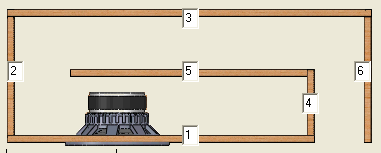Qw Box Calculator Torrent
- 6 Comments!

***DESLIGUE P3D Prepar3D v4 torrent. With Crack, Serial, Keygen for Windows, Mac. This is neccessary for the correct calculation of taxes. No cable box required. X only!), you can find more information in the preset comments. QualityWings Ultimate 787 Collection for Prepar3D v4 QualityWings, one of the industry.
Will try with internet explorer. Currently on desktop PC, but using Google chrome.  Wrote: 25 May 2016, 01:48 AM I'm also getting the rails error.
Wrote: 25 May 2016, 01:48 AM I'm also getting the rails error.
Linux command line exercises for NGS data processing Linux command line exercises for NGS data processing by The purpose of this tutorial is to introduce students to the frequently used tools for NGS analysis as well as giving experience in writing one-liners. Copy the required files to your current directory, change directory ( cd) to the linuxTutorial folder, and do all the processing inside: [uzi@quince-srv2 ~/]$ cp -r /home/opt/MScBioinformatics/linuxTutorial. [uzi@quince-srv2 ~/]$ cd linuxTutorial [uzi@quince-srv2 ~/linuxTutorial]$ I have deliberately chosen Awk in the exercises as it is a language in itself and is used more often to manipulate NGS data as compared to the other command line tools such as grep, sed, perl etc. Furthermore, having a command on awk will make it easier to understand advanced tutorials such as.
In Linux, we use a shell that is a program that takes your commands from the keyboard and gives them to the operating system. Most Linux systems utilize Bourne Again SHell ( bash), but there are several additional shell programs on a typical Linux system such as ksh, tcsh, and zsh. To see which shell you are using, type [uzi@quince-srv2 ~/linuxTutorial]$ echo $SHELL /bin/bash To see where you are in the file system: [uzi@quince-srv2 ~/linuxTutorial]$ pwd /home/uzi/linuxTutorial List the files in the current directory: [uzi@quince-srv2 ~/linuxTutorial]$ ls data Now try different commands from the sheet given below.

🙂 I'm using a 1.5 year old Mac, v 10.7.5, with a 2.5 GHz Intel Core i5 and 8GB 1600 MHz DDR3 memory. Recently, for the first time, my Mac has been lagging. It's not just Safari, it's also lagging every other application including MS Word.
(It couldn't be the Internet connection, my pages load just fine.) I've already taken a peek at Activity Monitor, and here's my colourful pie chart: My red and yellow bits are less than 50%, and a little googling tells me this should be good (am I right?) As for memory usage I still have 428.64 GB free out of 499.25 GB, so it can't possibly be that either. I've already hit the Repair Disk Permissions button twice on different days, and I also tried restarting my Mac 3 times - none of these seem to have made any difference. I only have two icons on my Desktop, I have no widgets whatsoever (not even the default calculator and clock), I meticulously exit any open application I don't need, I have no applications that open on startup, I cleared my Safari cache and history, nope Spotlight isn't doing anything iffy, I don't have any odd 3rd party applications except for Sophos Antivirus (which has never given me any problems) and a recently installed-then-uninstalled UTorrent. I'm at my wit's end here, trying to use my Mac for work but the lagging (especially in MS Word when editing notes) is driving me insane. I'd jump out the window except I live on the first floor.
Would really appreciate any help whatsoever, thanks in advance!! Remove the Sophos product by following the instructions on.
If you have a different version, the procedure may be different. Back up all data before making any changes. Uninstall SIMBL as follows. Triple-click anywhere in the line below on this page to select it, then copy the text to the Clipboard by pressing the key combination command-C: /Library In the Finder, select Go ▹ Go to Folder.